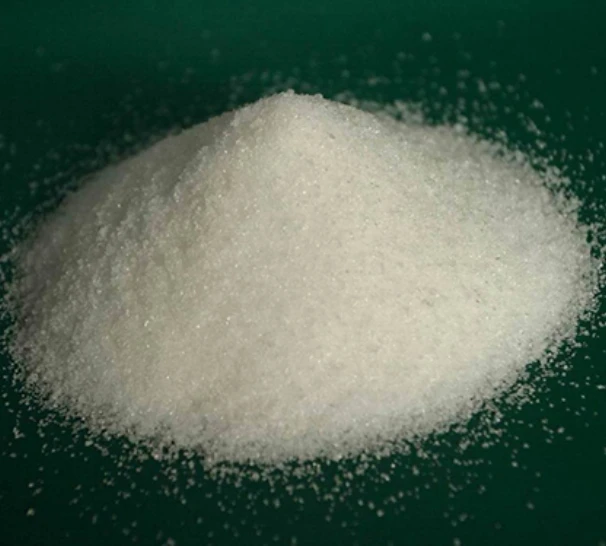Investigation into the Mechanisms and Applications of Polyacrylamide Formation in Various Fields
The Formation and Applications of Polyacrylamide A Comprehensive Overview
Polyacrylamide (PAM) is a synthetic polymer that has garnered significant attention in the fields of chemistry, environmental science, and engineering. Its unique properties, including high water solubility, excellent tensile strength, and versatility, have made it a vital material in numerous applications ranging from water treatment to agriculture. This article delves into the formation of polyacrylamide, its characteristics, and its diverse practical applications.
Formation of Polyacrylamide
Polyacrylamide is formed through the polymerization of acrylamide monomers, a process that can be initiated using various techniques, including heat, radiation, or chemical initiators. The most common method employed is free radical polymerization, wherein a free radical initiator triggers the formation of a reactive center in the acrylamide molecule. This radical then reacts with another acrylamide molecule, leading to a chain reaction where more monomers are added, resulting in a long-chain polymer.
There are two main types of polyacrylamide non-ionic and ionic, the latter further divided into anionic and cationic types. The ionic nature of the polymer can be adjusted by the inclusion of different co-monomers. The degree of polymerization, which refers to the number of repeating units in the polymer chain, can also be controlled to tailor the properties of polyacrylamide, making it suitable for specific applications.
Characteristics of Polyacrylamide
Polyacrylamide exhibits a range of remarkable properties. It is highly absorbent and can swell in water, making it an effective thickening and flocculating agent. Its gel-like consistency allows it to encapsulate particles, which is particularly beneficial in water treatment processes. PAM also possesses thermal stability and can maintain its structure under a variety of environmental conditions.
Furthermore, the ability to modify its properties by altering the degree of crosslinking and ionic content adds to its versatility. For instance, crosslinked polyacrylamide is used as a hydrogel in various biomedical applications, while linear polyacrylamide serves in applications requiring high viscosity.
Applications of Polyacrylamide
polyacrylamide formation

Polyacrylamide is widely utilized across several industries, evidencing its importance and versatility
1. Water Treatment One of the primary applications of PAM is in the treatment of industrial wastewater and municipal water. Its flocculating properties enable the clumping of suspended particles, allowing for their easy removal from water. This process not only cleans the water but also improves the efficiency of downstream filtration systems.
2. Soil Conditioning and Agriculture In agricultural practices, polyacrylamide is used to improve soil structure and moisture retention. When applied to soil, it enhances water infiltration and reduces erosion, thereby increasing crop yields.
3. Oil and Gas Industry In the oil industry, PAM is essential for enhanced oil recovery processes. It helps in the thickening of water, reducing the interfacial tension between oil and water, thus enhancing oil extraction.
4. Cosmetics and Pharmaceuticals Due to its gel-forming abilities, polyacrylamide is frequently used in skincare products and pharmaceuticals as a thickening agent or stabilizing component in emulsions.
5. Biotechnology and Molecular Biology Polyacrylamide gels are widely used in electrophoresis to separate proteins and nucleic acids, facilitating important research in biotechnology and genetics.
Conclusion
Polyacrylamide's formation through the polymerization of acrylamide and its diverse applications make it a powerful tool in modern science and industry. As research continues to evolve, new methods for synthesizing and utilizing polyacrylamide are likely to emerge, expanding its applications even further. This polymer not only underscores the beauty of chemistry in material science but also highlights the innovative ways in which synthetic materials can address real-world challenges.
-
lk-319-special-scale-and-corrosion-inhibitor-for-steel-plants-advanced-solutions-for-industrial-water-systemsNewsAug.22,2025
-
flocculant-water-treatment-essential-chemical-solutions-for-purification-processesNewsAug.22,2025
-
isothiazolinones-versatile-microbial-control-agents-for-industrial-and-consumer-applicationsNewsAug.22,2025
-
scale-inhibitor-key-solutions-for-water-system-scale-preventionNewsAug.22,2025
-
organophosphonates-versatile-scale-inhibitors-for-industrial-water-systemsNewsAug.22,2025
-
scale-and-corrosion-inhibitor-essential-chemical-solutions-for-water-system-maintenanceNewsAug.22,2025





